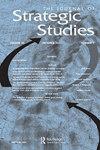Plebiscite Conundrum in Jammu and Kashmir
IF 1.3
2区 社会学
Q2 INTERNATIONAL RELATIONS
引用次数: 0
Abstract
Since 1947 the expectation that the fate of the disputed former princely state of Jammu and Kashmir would be decided by a plebiscite has been part of the narrative of the state’s history. Seventy-five years later, the plebiscite has never been held, the state remaining de facto divided between India and Pakistan, both accusing each other of illegally occupying the territory the other controls, while a significant proportion of the inhabitants of the state maintain that they have never been allowed their ‘right of self-determination.’[1] This paper examines the reasoning behind holding a plebiscite, the challenges of holding a unitary plebiscite in a state where the inhabitants of the major regions of the state have differing allegiances and aspirations and the reasons why the plebiscite was not held. It also explains why successive governments of Pakistan have clung to the notion of holding a plebiscite, whereas successive Indian governments have long since decided that a plebiscite is no longer necessary. Finally this paper will examine whether, in a changed demographic environment, with the state de facto divided for over half the time it was ever a united administrative unit, the holding of a plebiscite would resolve the issue or whether it would create more disaffection among disappointed minorities. [1] Pakistani maps and rhetoric describe the area of the state occupied by India as ‘illegally occupied disputed territory’; Indian maps describe the area of the state occupied by Pakistan as ‘Pakistan Occupied Kashmir’ (POK).查谟和克什米尔的公民投票难题
自1947年以来,有争议的前土邦查谟和克什米尔的命运将由公民投票决定的期望一直是该邦历史叙述的一部分。75年过去了,公民投票从未举行过,这个国家实际上仍然在印度和巴基斯坦之间分裂,双方都指责对方非法占领对方控制的领土,而该州相当大比例的居民坚持认为他们从未被允许他们的“自决权”。[1]本文考察了举行公民投票的原因,在一个主要地区的居民有不同的忠诚和愿望的国家举行单一公民投票的挑战,以及公民投票没有举行的原因。这也解释了为什么巴基斯坦历届政府一直坚持举行公民投票的想法,而印度历届政府早就决定不再需要公民投票。最后,本文将探讨,在人口环境发生变化的情况下,国家事实上有超过一半的时间是分裂的,它曾经是一个统一的行政单位,举行公民投票是否会解决这个问题,或者它是否会在失望的少数民族中引起更多的不满。[1]巴基斯坦的地图和措辞将被印度占领的地区描述为“非法占领的争议领土”;印度地图将巴基斯坦占领的地区描述为“巴占克什米尔”(POK)。
本文章由计算机程序翻译,如有差异,请以英文原文为准。
求助全文
约1分钟内获得全文
求助全文
来源期刊

Journal of Strategic Studies
Multiple-
CiteScore
4.00
自引率
5.30%
发文量
40
期刊介绍:
The defining feature of The Journal of Strategic Studies is its commitment to multi-disciplinary approach. The editors welcome articles that challenge our historical understanding of man"s efforts to achieve political ends through the application of military and diplomatic means; articles on contemporary security and theoretical controversies of enduring value; and of course articles that explicitly combine the historical and theoretical approaches to the study of modern warfare, defence policy and modern strategy. In addition to a well-established review section, The Journal of Strategic Studies offers its diverse readership a wide range of "special issues" and "special sections".
 求助内容:
求助内容: 应助结果提醒方式:
应助结果提醒方式:


